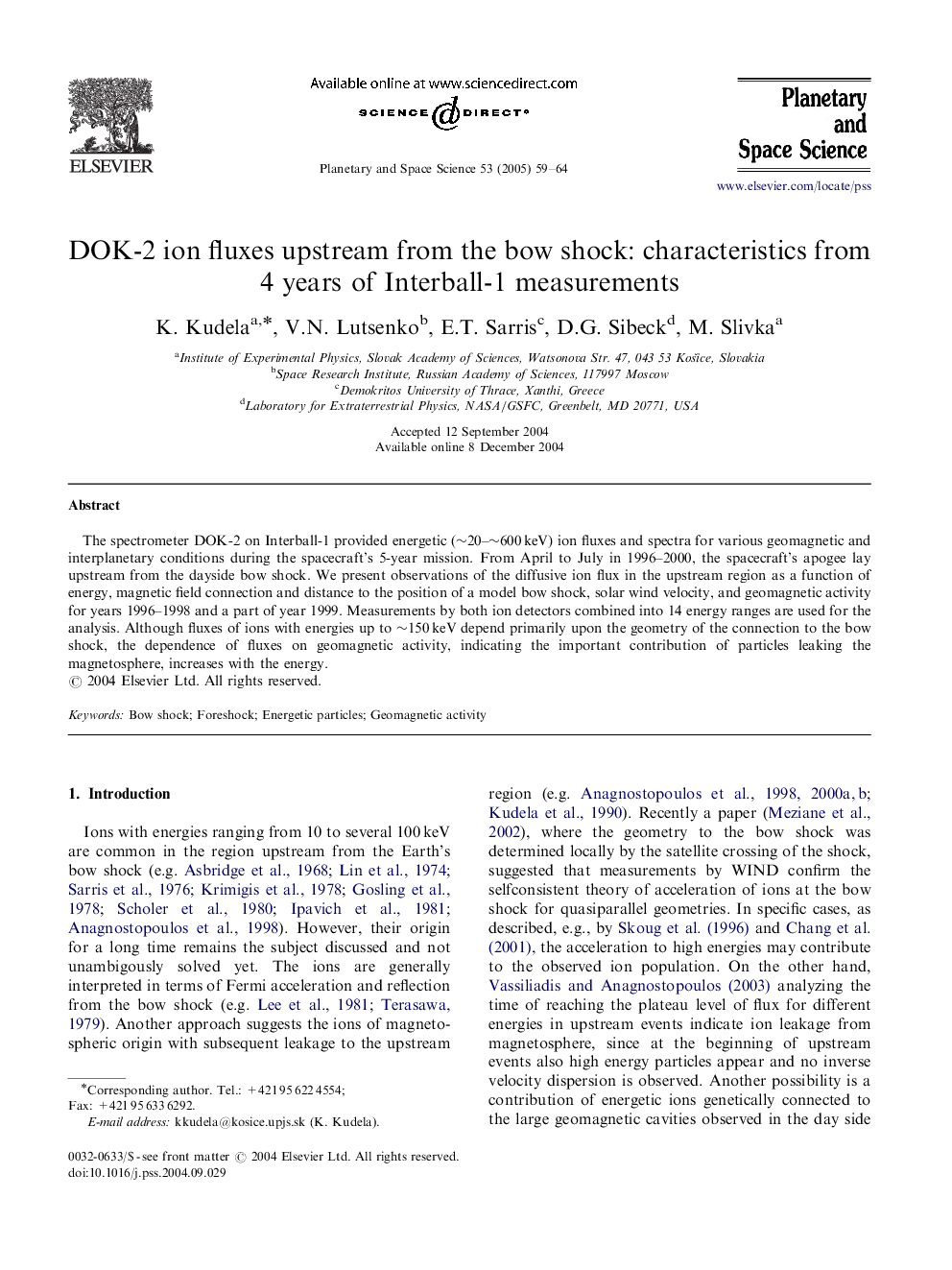| Article ID | Journal | Published Year | Pages | File Type |
|---|---|---|---|---|
| 9828582 | Planetary and Space Science | 2005 | 6 Pages |
Abstract
The spectrometer DOK-2 on Interball-1 provided energetic (â¼20-â¼600Â keV) ion fluxes and spectra for various geomagnetic and interplanetary conditions during the spacecraft's 5-year mission. From April to July in 1996-2000, the spacecraft's apogee lay upstream from the dayside bow shock. We present observations of the diffusive ion flux in the upstream region as a function of energy, magnetic field connection and distance to the position of a model bow shock, solar wind velocity, and geomagnetic activity for years 1996-1998 and a part of year 1999. Measurements by both ion detectors combined into 14 energy ranges are used for the analysis. Although fluxes of ions with energies up to â¼150Â keV depend primarily upon the geometry of the connection to the bow shock, the dependence of fluxes on geomagnetic activity, indicating the important contribution of particles leaking the magnetosphere, increases with the energy.
Related Topics
Physical Sciences and Engineering
Earth and Planetary Sciences
Geophysics
Authors
K. Kudela, V.N. Lutsenko, E.T. Sarris, D.G. Sibeck, M. Slivka,
